One of the joys of summer is attending garden tours. This time of year, many private gardens are open to the public, usually to support a local organization. One garden really knocked our socks off—featuring silver foliage plants to tie the garden together.
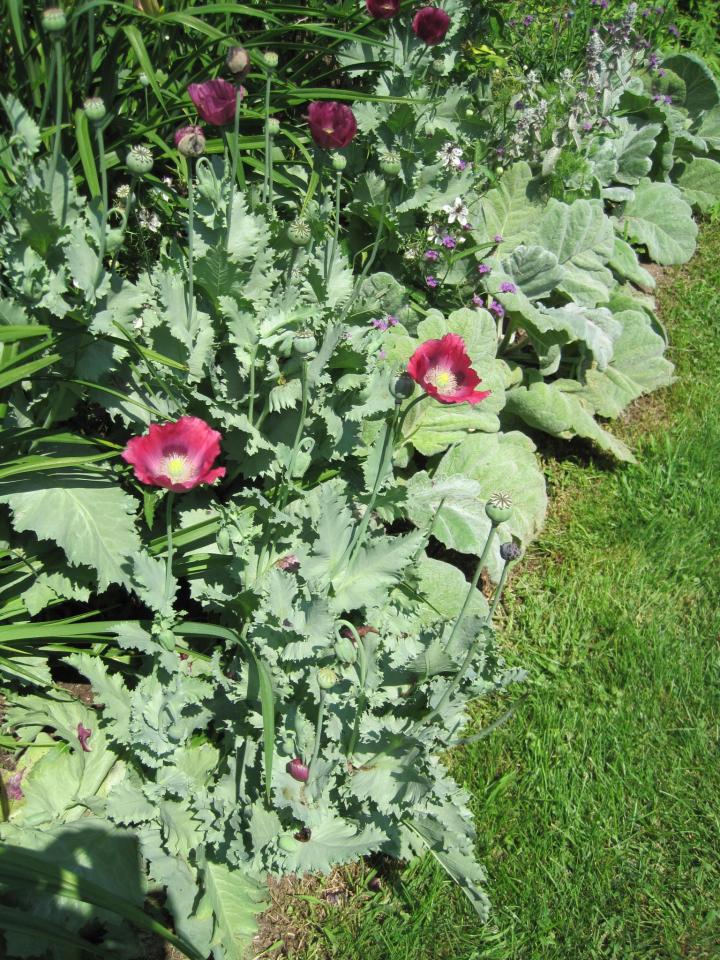
Silver leaves add color and texture, ease the transition from one flower color to another, and offer visual interest when nothing is in bloom. Soft shades of silver and gray lend a look of coolness to the garden on a hot day and enhance the green foliage of plants nearby. They blend well with any color and there is a wide range of heights and shapes to choose from making it easy to add a touch of silver wherever it is needed.
Also, most of these plants are not bothered by marauding deer or rabbits who especially dislike the fuzzy textured ones. They are also drought tolerant once established.
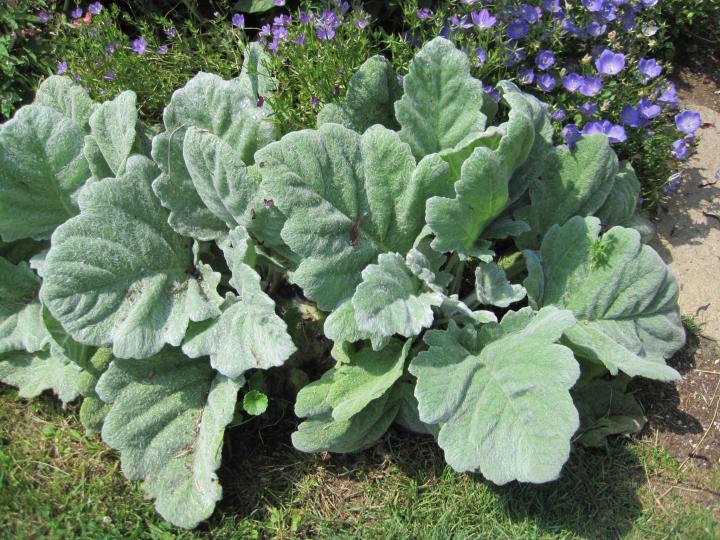
- Silver Sage (Salvia argentea) has fat wavy leaves covered with downy fuzz. The large leaves are 6 to 8 inches long and wide and the plants can grow to be 20 inches or more across so give them lots of room. Native to the eastern Mediterranean and northwest Africa, they are surprisingly hardy in zones 5 to 8. It is a short-lived perennial if you cut off the flower stalks and don't let it set seed otherwise grow it as a biennial. It will self sow giving you more plants for next year. Grow it in full sun to part shade.
Learn more about growing sage in the garden.
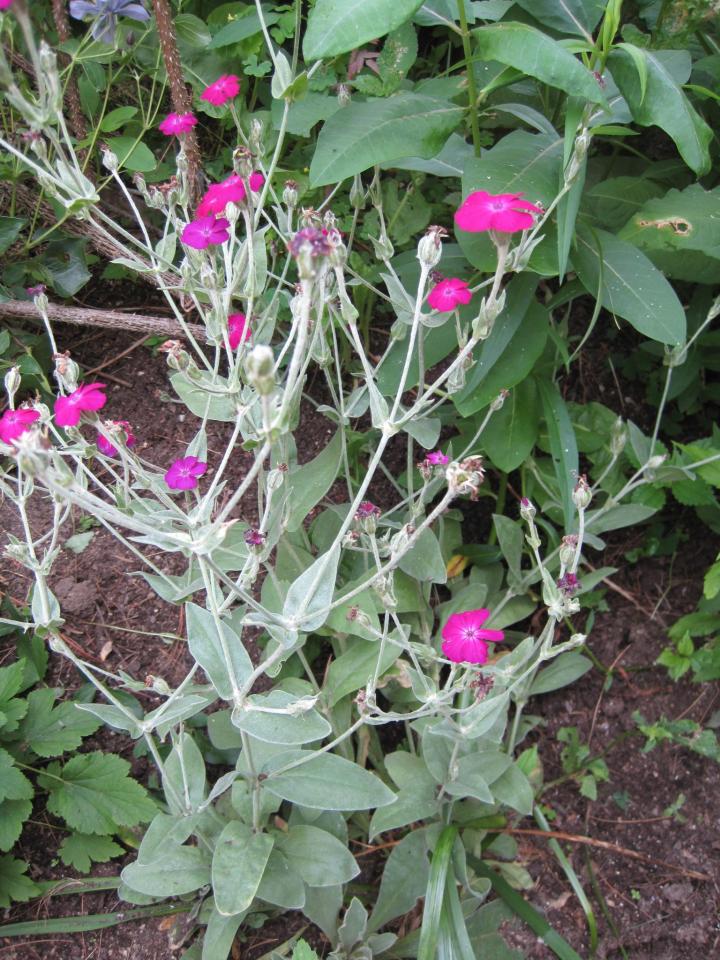
- Rose Campion (Lychnis coronaria) has bright magenta flowers on 2 to 3 foot tall gray stalks in early summer. Hardy to zone 4 it also self sows freely and can be a pest, though a beautiful one.
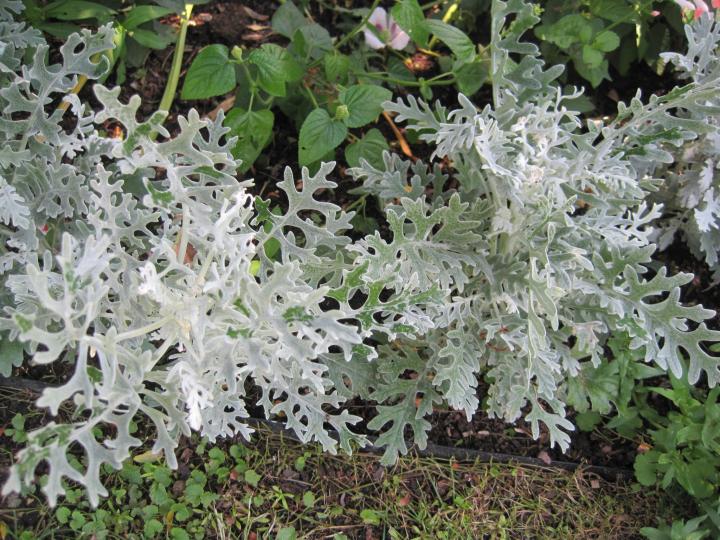
- Dusty Miller is an old time favorite that is making a comeback with good reason. Its lacy textured, soft gray leaves—which look like they were dusted with flour—combine well with anything. One classic combo pairs them with red geraniums. For the best color, plant them in full sun, otherwise they will tend to be more green than gray. They can grow to be 2 feet tall but pinch them back to encourage bushy growth. Hardy in zones 8 to 10, they are usually grown as an annual.
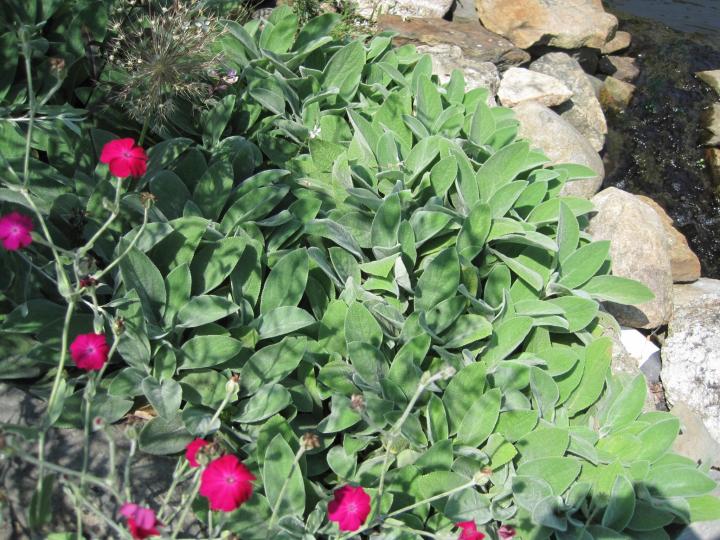
- Lamb's Ears (Stachys byzantina) have soft, velvety, silver leaves that just begged to be touched. Kids love this plant! Hardy in zones 4 to 8, it grows to be about 4 to 6 inches tall making it good for a front of the border spot. When it blossoms it sends up a 12 to 18 inch tall flower spike with tiny purple flowers. In the mint family, its creeping stems can be invasive. It will grow in full sun and poor soil.
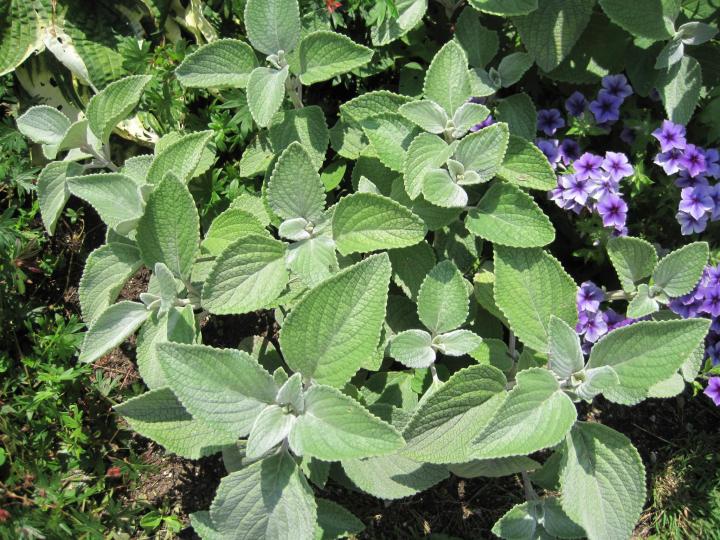
- Silver Shield (Plectranthus argentatus) is native to Australia and only hardy in zone 10 so grow it as an annual. It will get to be 24 inches tall and wide, likes part shade, and, though drought tolerant it also stands up to humid conditions. It will blossom, sending out spikes of bluish-white flowers but it is grown mainly for its lovely silver foliage.
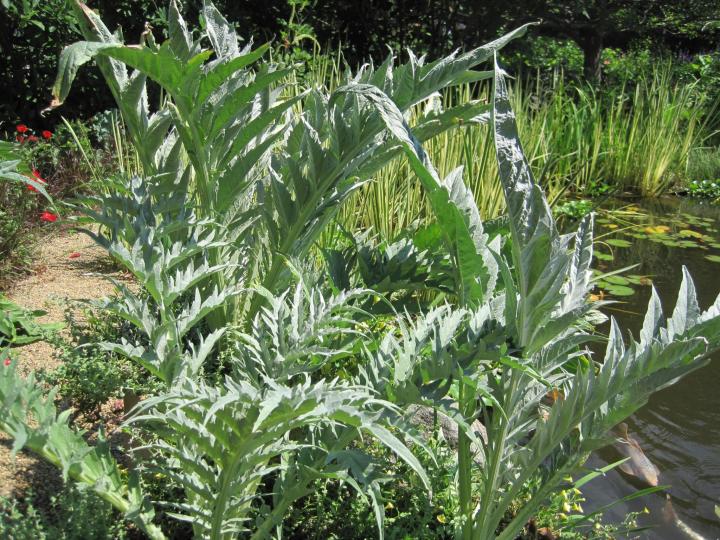
- Artichokes can be grown to make an architectural statement as well as for their edible flower buds.
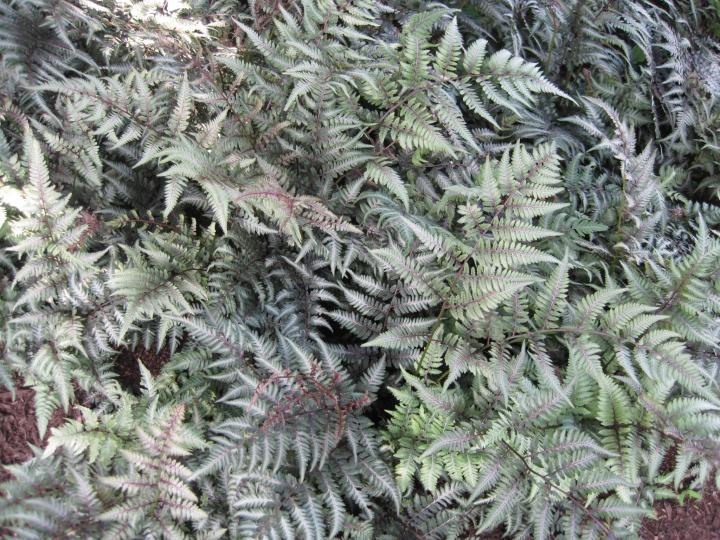
- Japanese Painted Fern will brighten up a dark spot. Its cool, silvery fronds are finely textured and have purple midribs. They grow 8 to 12 inches tall, are hardy in zones 4 to 9, and do best planted in rich moist soil, positioned in part to full shade. Unlike other types of ferns they are slow growing and non-aggressive.
There are plenty of other silver-leaved plants you can easily grow such as helichrysums and artemisias, lavender and santolina, or yarrow and Russian sage. Silver foliage looks good with everything, cooling down the hot colors and blending with pastels.
Once you have fallen in love with the effect silver leaves have on your garden, you may want to experiment with an all gray garden. Pair silver leaves with white flowers and evening bloomers to create a luminescent garden that glows in the moonlight.
